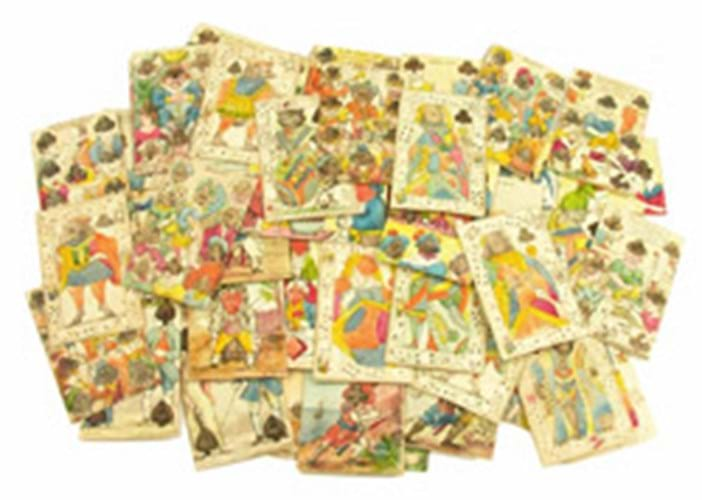
Creating 'Transformation' playing cards, in which the pip cards, whilst retaining their proper position and shape, are transformed into pictorial designs, became popular as a pastime at the very beginning of the 19th century - first in Germany and rapidly thereafter elsewhere.
At first, hand-drawn packs were made, but in September 1803 John Nixon began issuing sheets of designs that could be purchased plain or coloured and cut out and pasted on pasteboard as required.
Then in 1811, S.& J. Fuller of Rathbone Place, London, produced what may have been the first printed English pack, a set of 52 cards based on John Nixon's designs, drawn by a Mr Cowell and titled Metastasis.
The early sheets and the complete printed Metastasis packs are now exceptionally rare and the English Playing Card Society (EPCS) is currently working on a facsimile of that 1811 pack to mark the 25th anniversary of its founding.
The EPCS Metastasis decks are primarily intended for distribution among members, with some reserved for sale to the public, but the catalogue of a very recent provincial sale hinted that the real and very rare thing might be out there as well.
Tucked away in a September 15 furniture sale held by Woolley & Wallis (19.5% buyer's premium) of Salisbury was a lot offering not one, but two packs of what were catalogued as Metastasis transformation cards of 1811. In fact, these two packs were not examples of that edition but a later one of c.1820 - but still of the utmost rarity as early examples of transformation cards.
The saleroom noted that one card, a nine of hearts, was missing from one deck, and that several were drawn rather than printed. I understand from the buyer that the latter, five in all, were not copies of the missing cards, simply substitutes, and that neither pack could thus be viewed as complete - but an estimate of £200-300 was always likely to be left far behind.
Principal competition was between a bidder in the room and another on the telephone, the former being pushed to his absolute limit before finally securing the cards at £7200.





